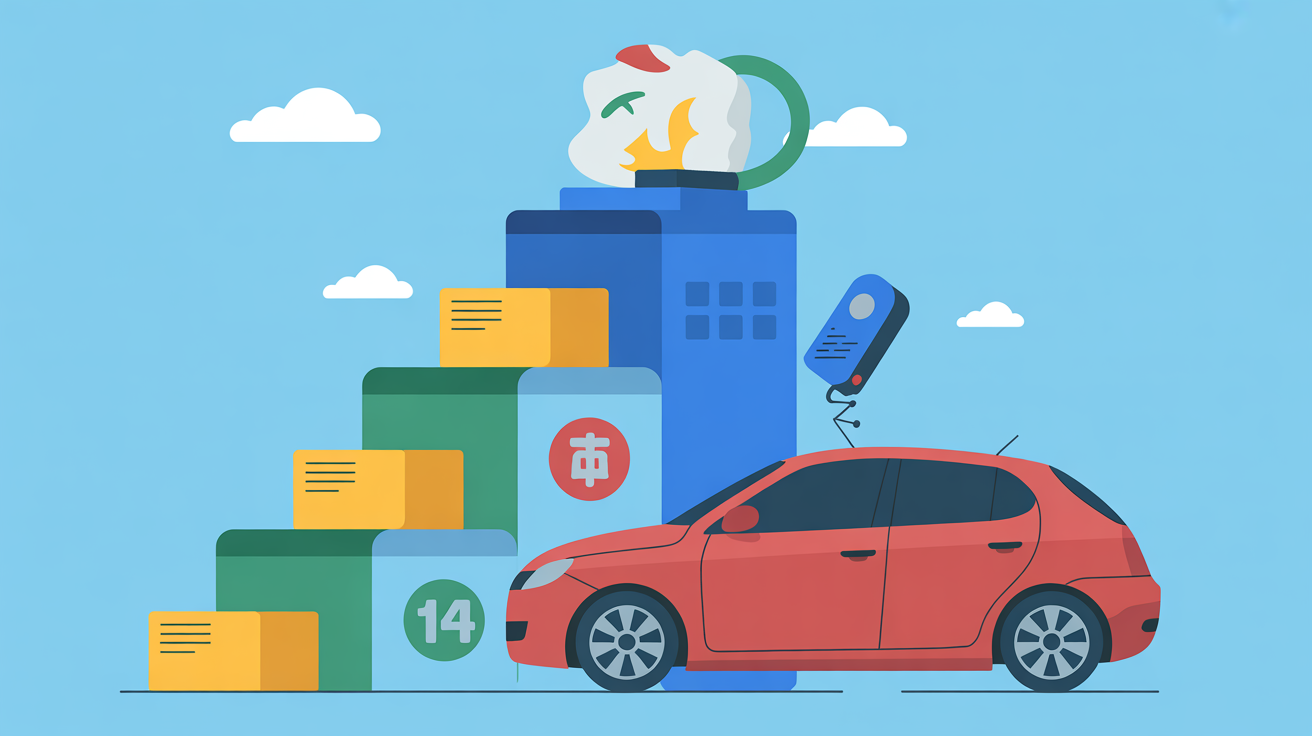Buying car insurance in India can be overwhelming, with countless policies, providers, and fine print to navigate. One wrong move could leave you underinsured, overpaying, or stuck with a policy that doesn’t suit your needs. Whether you’re a first-time car owner or renewing your policy, avoiding common pitfalls is key to securing the right coverage. This article highlights the top mistakes to avoid while buying car insurance in India, offering practical tips to save money and ensure peace of mind. From misunderstanding coverage to ignoring add-ons, we’ll guide you through the process with actionable insights.
Why Car Insurance Matters in India
Car insurance is mandatory under the Motor Vehicles Act, 1988, requiring at least third-party liability coverage. Beyond legal compliance, it protects you from financial losses due to accidents, theft, or natural calamities. However, choosing the wrong policy can lead to hefty out-of-pocket expenses or inadequate protection.
Example: Priya, a 35-year-old professional from Mumbai, opted for a cheap third-party policy to save money. When her car was damaged in a flood, she faced ₹2 lakh in repair costs, as her policy didn’t cover natural disasters. Understanding key mistakes can help you avoid such scenarios.
Related Reading: Understanding Car Insurance Basics in India (Internal Link)
1. Not Comparing Policies
One of the biggest mistakes is settling for the first policy you find. With numerous insurers like HDFC Ergo, ICICI Lombard, and Bajaj Allianz, comparing policies is crucial for finding the best deal.
- What to Compare:
- Premiums
- Coverage options
- Add-ons like zero depreciation
- Claim settlement ratio
Tip: Use comparison platforms like Policybazaar to evaluate multiple policies side-by-side.
Visual Suggestion: Include a comparison table of top insurers’ premiums and features.
2. Choosing the Cheapest Policy
Opting for the lowest premium often leads to inadequate coverage. Third-party insurance is cheaper but doesn’t cover damage to your car. Comprehensive policies, while costlier, offer broader protection.
Case Study: Raj, a 28-year-old from Delhi, chose a third-party policy for his new SUV to save ₹5,000 annually. When his car was stolen, he received no compensation, as theft wasn’t covered. A comprehensive policy would have saved him ₹7 lakh.
Pro Tip: Balance cost and coverage by opting for comprehensive plans with essential add-ons.
3. Ignoring Add-On Covers
Add-ons enhance your policy but are often overlooked. Popular add-ons include:
- Zero Depreciation: Covers full repair costs without factoring in depreciation.
- Roadside Assistance: Provides help for breakdowns or flat tires.
- Engine Protection: Covers engine damage from waterlogging or oil leaks.
Example: Ankit, a Bangalore resident, skipped engine protection during monsoon season. When his car’s engine seized due to water ingress, he paid ₹50,000 out-of-pocket for repairs.
Internal Link: Guide to Car Insurance Add-Ons
4. Not Reading Policy Terms
Failing to read the fine print can lead to surprises during claims. Key terms to check:
- Exclusions: What’s not covered (e.g., driving under the influence).
- Deductibles: Your out-of-pocket contribution during claims.
- Claim Process: Steps and documents required.
External Resource: IRDAI’s Guide to Policy Documents.
5. Underinsuring Your Vehicle
Underinsuring means declaring a lower Insured Declared Value (IDV), reducing your premium but also your claim payout. The IDV is the car’s market value, and setting it too low can hurt you during total loss or theft.
Example: Meena set her car’s IDV at ₹5 lakh instead of ₹8 lakh to save ₹3,000 on premiums. When her car was totaled, she received only ₹5 lakh, far below replacement costs.
Pro Tip: Ensure the IDV reflects your car’s current market value.
6. Overlooking No-Claim Bonus (NCB)
The No-Claim Bonus rewards policyholders for not filing claims, offering premium discounts of 20-50%. Transferring or protecting your NCB is critical when switching insurers or buying a new car.
Tip: Opt for an NCB protection add-on to retain benefits even after a claim.
7. Not Checking the Insurer’s Claim Settlement Ratio
The claim settlement ratio indicates an insurer’s reliability in processing claims. A low ratio suggests delays or rejections. For 2023-24, top insurers like ICICI Lombard (98%) and Bajaj Allianz (96%) had high ratios.
Visual Suggestion: Include a bar chart of top insurers’ claim settlement ratios.
External Resource: IRDAI Annual Report for claim settlement data.
8. Ignoring Network Garages
Cashless claims at network garages simplify repairs, as the insurer settles bills directly. Choosing a policy with limited network garages can lead to out-of-pocket expenses or inconvenient repair locations.
Case Study: Sanjay’s insurer had no network garages near his Chennai home. He paid ₹15,000 upfront for repairs and waited weeks for reimbursement.
Pro Tip: Choose insurers with extensive network garages, like HDFC Ergo’s 7,000+ garages.
9. Not Disclosing Accurate Details
Providing incorrect details (e.g., car model, usage, or modifications) can lead to claim rejections. Insurers verify details during claims, and discrepancies can void your policy.
Example: Vikram declared his car as “personal use” but used it for ride-sharing. When he filed a claim after an accident, the insurer rejected it due to policy misuse.
10. Missing Renewal Deadlines
Letting your policy lapse can lead to penalties, loss of NCB, and legal issues. In India, driving without valid insurance attracts a ₹2,000 fine for the first offense.
Tip: Set reminders or opt for auto-renewal to avoid lapses.
What’s New in 2025?
- Telematics-Based Insurance: Insurers use driving data to offer personalized premiums.
- Digital Claims Processing: AI-driven apps speed up claim approvals.
- Green Insurance Add-Ons: Coverage for electric vehicle batteries and charging stations.
Pros and Cons of Car Insurance in India
| Pros | Cons |
|---|---|
| Mandatory third-party coverage ensures compliance | Comprehensive policies can be expensive |
| Add-ons customize protection | Complex terms confuse buyers |
| Cashless claims at network garages | Claim rejections due to discrepancies |
| NCB reduces premiums over time | Limited coverage in basic policies |
FAQ Section
What Is the Difference Between Third-Party and Comprehensive Car Insurance?
Third-party insurance, mandated by law, covers damages to others caused by your car but not your vehicle’s damages. Comprehensive insurance includes third-party coverage plus protection for your car against accidents, theft, or natural calamities. Comprehensive plans are pricier but offer peace of mind. For example, a comprehensive policy for a ₹10 lakh car might cost ₹15,000 annually, while third-party coverage costs ₹3,000-₹5,000.
How Can I Reduce My Car Insurance Premium?
To lower premiums, compare policies, maintain a good driving record to earn NCB, choose a higher deductible, and avoid unnecessary add-ons. For instance, opting for a ₹5,000 voluntary deductible can reduce your premium by 10-15%. Installing anti-theft devices or opting for telematics-based insurance in 2025 can also lower costs.
What Add-Ons Should I Consider for Car Insurance?
Essential add-ons include zero depreciation, roadside assistance, and engine protection. Zero depreciation ensures full repair cost coverage without depreciation deductions, ideal for new cars. Roadside assistance helps with breakdowns, while engine protection is crucial in flood-prone areas. Evaluate your driving conditions and car age before choosing add-ons.
Why Was My Car Insurance Claim Rejected?
Claims are often rejected due to policy exclusions, incorrect details, or lapsed policies. For example, driving under the influence or using a personal car for commercial purposes can void claims. Always read policy terms, disclose accurate details, and renew on time to avoid rejections.
How Do I Choose a Reliable Car Insurance Provider?
Check the insurer’s claim settlement ratio, network garage coverage, and customer reviews. Providers like ICICI Lombard and Bajaj Allianz have high ratios (above 95%) and extensive garage networks. Use platforms like Policybazaar to compare providers based on premiums and features.
Is Car Insurance Mandatory in India?
Yes, the Motor Vehicles Act, 1988, mandates third-party liability insurance for all vehicles. Driving without it incurs a ₹2,000 fine for the first offense and ₹4,000 for subsequent ones. Comprehensive insurance, while optional, is recommended for full protection.
Schema Markup for FAQ:
{
"@context": "https://schema.org",
"@type": "FAQPage",
"mainEntity": [
{
"@type": "Question",
"name": "What Is the Difference Between Third-Party and Comprehensive Car Insurance?",
"acceptedAnswer": {
"@type": "Answer",
"text": "Third-party insurance, mandated by law, covers damages to others caused by your car but not your vehicle’s damages..."
}
},
...
]
}
Conclusion
Buying car insurance in India requires careful consideration to avoid costly mistakes. Compare policies, understand add-ons, read terms, and choose a reliable insurer to secure the right coverage. By steering clear of these common pitfalls, you can protect your vehicle and finances effectively. Have questions or experiences to share? Leave a comment below or sign up for our newsletter for more insurance tips!


1 thought on “Top Mistakes to Avoid While Buying Car Insurance in India”